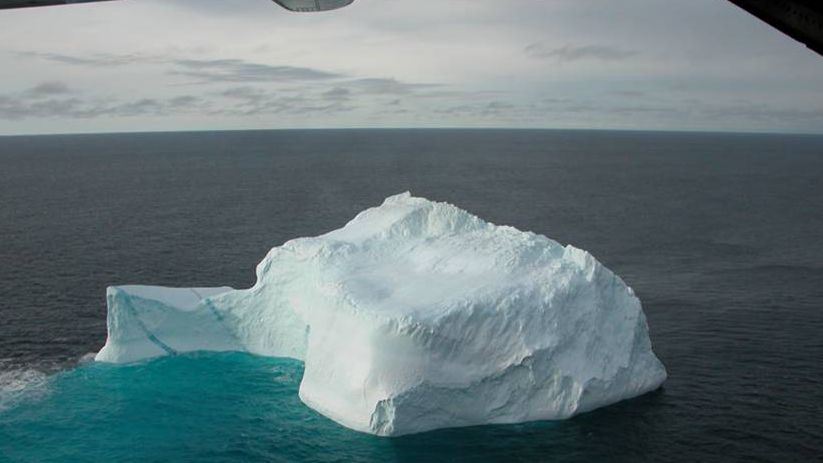The History of the International Ice Patrol

From the earliest journeys into the North Atlantic, icebergs have threatened vessels. A review of the history of navigation prior to the turn of the century shows an extensive number of casualties occurring in the vicinity of the Grand Banks. For example, the Lady of the Lake sank in 1833 with a loss of 70. Between 1882 and 1890, 14 vessels were lost and 40 seriously damaged due to ice. This does not include the large number of whaling and fishing vessels lost or damaged by ice. It took one of the greatest marine disasters of all time to arouse public demand for international cooperative action to deal with the navigational hazard. This disaster, the sinking of the RMS Titanic on April 15, 1912, was the force that established the International Ice Patrol.
On its maiden voyage from Southampton, England, bound for New York, Titanic collided with an iceberg just south of the tail of the Grand Banks and sank within 2 1/2 hours. Although the night was clear and seas were calm, the loss of life was enormous with more than 1,500 of the 2,224 passengers and crew perishing. The vessel had been built with the latest safety design, featuring compartmentation and such innovations as automatically closing watertight doors. It is ironic that publicity regarding these features had given it the reputation of being unsinkable.
The loss of Titanic gripped the world with a chilling awareness of an iceberg’s potential for tragedy. The sheer dimensions of the Titanic disaster created sufficient public reaction on both sides of the Atlantic to prod reluctant governments into action, producing the first Safety of Life at Sea (SOLAS) convention in 1914. The degree of international cooperation required to produce such an unprecedented document was truly remarkable and probably could not have been achieved during this period without the catalyst provided by this incident.
In the years immediately following Titanic’s sinking, the United States was charged with operating the patrol. The mission was assigned to the Revenue Cutter Service in 1914 and in 1915 was transferred as the International Ice Patrol to the newly-formed U.S. Coast Guard. Using the Coast Guard Cutters Seneca and Miami, the Ice Patrol would locate the southeasternmost iceberg and drift with it until it melted. While they were on station, they would notify the transatlantic shipping community of the iceberg’s location and advise vessels to keep a wide berth. This method of iceberg warning continued until the use of aircraft for aerial reconnaissance was deemed more effective after World War II.

The Ice Patrol still uses aerial reconnaissance as the primary method for iceberg detection while adding the capability for satellite-based reconnaissance in 2017. The primary platform currently used is the U.S. Coast Guard HC-130J Super Hercules airplane model based out of Coast Guard Air Station Elizabeth City, North Carolina.
Today, the mission of the International Ice Patrol is to monitor the iceberg danger in the North Atlantic Ocean and to provide relevant iceberg warning products to the maritime community. Every day, the Ice Patrol ingests iceberg reports from its own aerial reconnaissance and satellite imagery analysis, commercial aerial reconnaissance, ships, and even lighthouses! Once all of this data is compiled, Ice Patrol publishes an iceberg chart and bulletin. Both products’ main piece of information is the Iceberg Limit which advises vessels where the safe, ice-free waters are located. No vessel heeding Ice Patrol’s warning in the 104 years since its inception has collided with an iceberg. The Coast Guard is very proud of this enviable, perfect safety record and is dedicated to keeping vessels safe navigating across the North Atlantic.

This article appears courtesy of Coast Guard Compass and may be found in its original form here.
